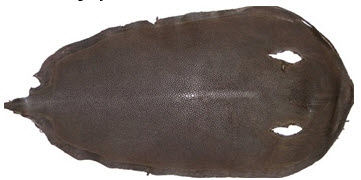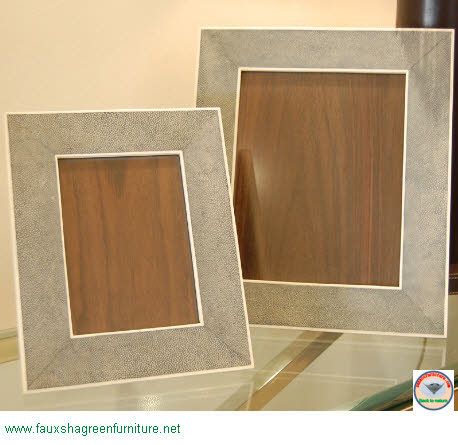-
A brief history of the Shagreen (Stingray skin)
There are a lot of tales about Shageen or Stingray. Our research on many ancient books and worldwide information will surely satisfy your inquiries on Shagreen. This offers you a short history of the Shagreen- an exotic material for royal families.
A brief history of the Shagreen (Stingray skin)
Warmly welcome to Daphoco furniture’s website. This article is to review the history of the shagreen from the past.
Stingray skins are covered with a protective layer of tiny round enamel "beads". These beads get larger towards the center of the back, finishing in an "eye" that gives focus to each skin. It is this extraordinary back and its” distinctive eye that is used for decorative purposes, so shagreen has been a luxurious decorative material for many centuries.


Supposedly, shagreen has been prized since the time of the pharaohs, and during the Chinese Han Dynasty (202 BC - AD 220). Shagreen was used in the construction of bows.
In Japan, shagreen has been better documented and preserved since it began appearing on the sword hilts and armor of Japanese Samurai during the Middle Ages, in part because its texture provided a reliable grip.
Europe began importing shagreen-covered objects during the 17th and 18th centuries, and in the mid-1700s, a tanner in Paris became the first European shagreen expert (his name, Galluchat, has been transformed into Galuchat, and now Galuchat is the French word for shagreen.) Louis XV”s most famous mistress, Madame de Pompadour, was the dominant patron of Monsieur Galluchat. Shagreen was one of her favorite materials so shagreen became a luxury court material used on such objects as sword handles, sheathes, snuff boxes & wig cases. And it was said that a week didn”t go by when she didn”t buy some new objects, often in shagreen

Shagreen became a popular material again in Europe during the Art Deco era, when designers sought to fuse the French tradition of luxury with exotic and precious materials. Designers like Clément Rousseau and Jean-Michael Frank used shagreen to create their most sumptuous furniture. The French royal courts also applied skins to eyeglass cases, sword handles and household accessories. Stingray skins were largely dyed green and then polished with black lacquer. Stingray skins were used as elements of marquetry or sometimes as veneer for entire areas on tables and cabinets.


In the modern times, Shagreen that sticked on the furniture and others things helps these products become very luxurious and exclusive; however, Shagreen, which takes from animals, is prohibited in many countries over the world, so at Daphoco, which run by a group of skilled workers and experienced designers in this field for years, has created many fine manufacturing methods that produce fauxshagreen from resin and other materials. Fauxshagreen is glued on many furniture and giftwares products makes them sumptuous and exotic. The difference between real shagreen and fauxshagreen at Daphoco is not easy to know because they are so similar.

See more in the article: The real application of faux shagreen in daily life.
http://fauxshagreenfurniture.net/en/contact-us/
Post date: 15-02-2014 17,666 view(s)
Relate News
- Daphoco Factory Sale 2025 – Our Biggest Annual Event on November 15th –16th 2025
- How to report a crime or security stuffs to police via VNeID in Vietnam
- Who will take resposibility for motobike lost at the coffee shop?
- Shagreen/ Stingray welcomes Lucky Fortune
- Video: Stingray lying on the beach and a new discovery to tourists.
- From the stingray skin fever for jewelry to the stingray leather interior in modern times
- The meanings of Turtle/ Tortoise in your house
- How to care for Faux Shagreen finishing products
- What is Shagreen





